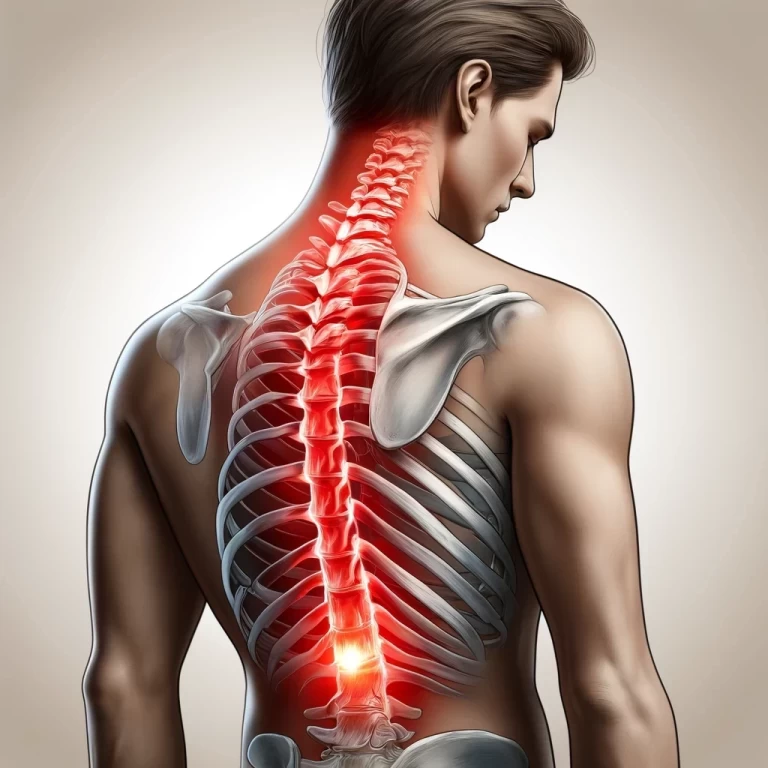
Thoracic spine pain is a condition that can significantly impact an individual’s quality of life. Characterized by pain in the middle section of the back, thoracic spine pain can arise from various causes, including musculoskeletal issues, disc problems, and poor posture. One increasingly recognized method for managing this type of pain is upper cervical care, a specialized form of chiropractic treatment focusing on the uppermost vertebrae in the spine. In this blog, we will explore the implications of upper cervical care in treating thoracic spine pain, its benefits, and what patients can expect from this approach.
Understanding Thoracic Spine Pain
By downloading the Digital Patient Chart mobile app you can better control your patient portal.
The thoracic spine consists of twelve vertebrae located between the cervical spine (neck) and the lumbar spine (lower back). Pain in this region can be due to several factors:
- Muscle Strain: Overuse or improper use of back muscles.
- Poor Posture: Prolonged sitting or standing in poor postures.
- Disc Problems: Herniation or degeneration of intervertebral discs.
- Trauma: Injuries from accidents or falls.
- Underlying Medical Conditions: Such as osteoporosis or arthritis.
Thoracic spine pain can manifest as a sharp, stabbing pain or a dull, aching discomfort. It may be localized or radiate to other areas, and it often affects an individual’s mobility and daily activities.
What is Upper Cervical Care?
Upper cervical care is a chiropractic technique that focuses on the alignment of the top two vertebrae in the spine, known as the atlas (C1) and the axis (C2). These vertebrae are crucial as they support the head and enable a range of motion. Misalignment in this region can lead to a chain reaction of compensations and imbalances throughout the spine, potentially contributing to pain in other areas, including the thoracic spine.
The Connection Between Upper Cervical Alignment and Thoracic Spine Pain
The spine operates as a connected unit, and misalignment in one part can affect the rest of the spine. Here’s how upper cervical misalignment can influence thoracic spine pain:
- Neurological Impact: The misalignment can affect the nervous system, leading to muscle tension and pain signals in the thoracic region.
- Postural Changes: Misalignment can cause the body to adopt compensatory postures, leading to strain and pain in the middle back.
- Biomechanical Stress: Imbalance in the upper cervical spine can alter the mechanics of the entire spine, increasing wear and tear on the thoracic vertebrae and discs.
Benefits of Upper Cervical Care for Thoracic Spine Pain
1. Targeted Pain Relief:
By correcting the alignment of the upper cervical vertebrae, pressure on nerves and muscles can be reduced, leading to pain relief in the thoracic spine.
2. Improved Posture:
Proper alignment helps in maintaining a healthy posture, reducing the strain on the thoracic spine.
3. Enhanced Nervous System Function:
Upper cervical adjustments can improve the functioning of the nervous system, promoting overall spinal health.
4. Non-Invasive Approach:
Upper cervical care is a non-surgical, drug-free treatment option that focuses on the body’s natural ability to heal itself.
What to Expect During Upper Cervical Care
Upper cervical chiropractors use precise diagnostic tools to assess the alignment of the atlas and axis. These tools may include X-rays, digital imaging, and thermography. The adjustment techniques are gentle and involve minimal force. Here’s what patients can expect:
- Initial Assessment: A comprehensive examination to understand the patient’s health history, symptoms, and spinal alignment.
- Customized Treatment Plan: Based on the assessment, a tailored treatment plan is developed, focusing on correcting the upper cervical misalignment.
- Gentle Adjustments: Unlike traditional chiropractic adjustments, upper cervical adjustments are gentle and involve specific, controlled movements.
- Follow-Up Care: Regular follow-ups to monitor progress and make necessary adjustments.
Case Studies and Evidence
Numerous case studies and clinical research support the efficacy of upper cervical care in managing various types of spinal pain, including thoracic spine pain. For instance, a study published in the Journal of Upper Cervical Chiropractic Research highlighted significant improvements in patients with chronic spinal pain following upper cervical adjustments. Patients reported reduced pain levels, improved mobility, and better quality of life.
Incorporating Upper Cervical Care into a Comprehensive Treatment Plan
While upper cervical care can be highly effective, it is often most beneficial when combined with other treatments and lifestyle changes. Here are some complementary strategies:
- Ergonomic Adjustments: Modifying workspaces and daily habits to reduce strain on the spine.
- Nutritional Support: A balanced diet to support bone and muscle health.
- Stress Management: Techniques such as yoga and meditation to reduce stress, which can exacerbate pain.
Thoracic spine pain can be a debilitating condition, but upper cervical care offers a promising treatment option. By addressing misalignments in the upper cervical spine, patients can experience significant pain relief and improved overall spinal health.









Leave a comment